#Cowell
Explore tagged Tumblr posts
Text
The Gothic in Classical Music History (1760s-1920s)
Intro Back in high school I fell in love with two things; classical music, and Edgar Allan Poe. I’ve always loved Halloween, October, spooky things, ghost stories, horror and slasher movies, etc. And I always loved finding classical music that was also spooky, or dark, or evocative of the same eerie experience of a cold and foggy October day. Thinking about these memories made me want to put together a short list of Gothic Classical music.
But what do I mean? There is no true “Gothic music” as in a specific movement in classical history, because the traditional Gothic refers to literature. Not all art movements have corresponding trends in all mediums. Even so I thought it would be fun to say, if there was such a thing as Gothic music, what would that include?
18th Century

John Henry Fuseli - The Nightmare (1781)
Music of the 1760s-1790s, corresponding with the first wave of “Gothic Novels” in the English language. Some names in this era include Horace Walpole (The Castle of Otranto), Ann Radcliffe (The Mysteries of Udolpho, The Italian) and Charles Brockden Brown (Wieland). The closest we have to music of this same era would be in the Sturm und Drang style. Sturm und Drang (Storm and Stress) was used to describe music written in a minor key that was restless, agitated, intense, emotional, and more extreme than the typical expectations for restraint and lightness/clarity, music that aristocrats in powdered wigs and velvet and lace could relax with. Strong changes of emotion and more emphasis on subjectivity, reflected by sudden modulations and pulsing rhythms.
The most famous piece that I associate with Sturm und Drang is Wolfgang Amadeus Mozart’s “little” g minor Symphony no.25, K.183 (1773). It is famously used in the opening of Miloš Forman’s Amadeus (1984). It is a fun piece, and that opening movement is full of fire, and probably the young Mozart having fun (he wrote it at 17. If you ever want to lower your self esteem, look up what music Mozart wrote at your current age.). Another major work would be Joseph Haydn’s “Farewell” Symphony no.45 (1772), written in the very unusual for the time key of f# minor. And of course, even though he comes later, anything Ludwig van Beethoven published in a minor key has a lot of muscular passion to it, and his early/classical era of the 1790s is no joke. Check out the final movements of his Piano Trio no.3 in c minor and his Piano Sonata no.1 in f minor, or his most famous early sonata, the Pathetique.
But if the Sturm und Drang style and Gothic genre also emphasize the disturbed and the psychological, we can include programmatic works that do the same. Mozart’s opera Don Giovanni (1788) has an incredible moment in the finale. The sociopathic hedonist is confronted by the ghost of the man he murdered in the first act, who possesses a statue and confronts Don Giovanni with his sins. Don Giovanni doesn’t repent, so he is dragged into hell with a chorus of demons. Always a good reminder that Mozart wasn’t the eternal child who wrote pretty melodies.
19th Century

Caspar David Friedrich - The Abbey in the Oakwood (1810)
Music of the early 19th century corresponds better with Gothic fiction because Romanticism in art brought greater interest in the supernatural, in the subjective, in emotional reactions to the universe… major names in fiction include the poetry of Lord Byron (Darkness), Mary Shelley (Frankenstein, The Last Man), and Sir Walter Scott (The Bride of Lammermoor). Greater emphasis is put on the anxiety of the unknown, supernatural fears beyond our control.
Of all Franz Schubert’s songs, Erlkönig (1815) best exemplifies the Gothic (and this is a bold claim because I only know about a fraction of Schubert’s extensive song output). In it, a father and son are riding on horseback. The son is sick with fever. As they ride, the son cries out that he can hear the Elf King calling out to him, some evil spirit or demon that wants to take the son’s life. The father tries to calm him down, but the Elf King gets closer and closer. By the time they reach home, the son has died. Was the Elf King real? Was the son hallucinating from fever? How literal should we take this text? The ambiguity of subjective experiences and how we interpret and understand reality is a major theme in Gothic fiction.
Many famous German operas lean into the supernatural and magical. In this period we get Carl Maria von Weber’s Der Freischütz (1821), considered to be the first Romantic opera. In it, our main character Max who needs to win a shooting contest so he can be allowed to marry his lover, Agathe. He is given a gun that can shoot magic bullets by another forrester Kaspar (who has his own plans). Kaspar tells Max to meet him in the “Wolf’s Glenn” in the woods at midnight for more magic bullets. In the Wolf’s Glenn, Kaspar calls for a spirit, the Black Huntsman Samiel, to help him curse the other characters, offering Max’s soul in exchange. Making deals with demons/the devil was another fascination in Romanticism.
Legends of a diabolical nature were springing around great musicians. At the end of the 1700s, Giuseppe Tartini wrote his most famous composition, the “Devil’s Trill” Violin Sonata in g minor which is full of virtuosic passages. Tartini claimed that the Devil appeared to him in a dream, and that he sold his soul in exchange for the Devil to be his servant. He handed the Devil his violin, and the Devil “…played with such great art and intelligence, as I had never even conceived in my boldest flights of fantasy. I felt enraptured, transported, enchanted: my breath failed me, and I awoke” Source
Similar stories came about with violinist Niccolò Paganini, who astonished the audiences of the early 19th century with his (for the time) otherworldly technique, dazzling them with scales and leaps and scratches the likes of which you can hear across his 24 Caprices for solo violin. A young Franz Liszt was at one of Paganini’s concerts and he was enthralled and inspired to become the “Paganini of the Piano”. He too would dazzle audiences with his percussive intensity, glittering arpeggios, and dreamy modulations to possess women with the spirits of hysteria and other dated misogynistic diseases. Cliche to say but before Bieber Fever, before Beatlemania, there was Lisztomania.
The sense of Faustian bargains comes through in the pieces Liszt wrote after Goethe’s Faust. The Faust Symphony (1857) includes a movement for Mephistopheles, the demon/ the Devil that bargains with Faust. The Mephistopheles movement has no original theme, but takes and corrupts the themes of Faust and his lover Gretchen into a mocking tone. Later on, Liszt was inspired to write a tone poem “The Dance in the Village Inn” or Mephisto Waltz no.1 (c.1862). He also wrote it for piano around the same time. The story has Mephistopheles taking Faust to a wedding in a village and playing the violin so madly, the partygoers are intoxicated by the music and go off dancing in the woods. Emotions taking over and making one act irrationally was another fascination in Gothic fiction.
Liszt would go on in his later years writing a few more Mephisto waltzes, with a lot of forward thinking harmonies and piano writing, unfortunately not as popular. Mephisto waltz no.2 (1881) has moments that make me think of Debussy, and the third (1883) has glittering and ethereal moments. But the best example of Liszt’s interest in the Gothic would be his earlier concert piece Totentanz (1949), or Dance of Death (Danse macabre). In it, the piano and orchestra play out variations on the Medieval chant Dies Irae, always reminding us of the inevitability of death. The variations depict skeletons dancing wildly all while the Mephistopheles at the piano unleashes his seductive tones.
The Dies Irae chant goes across our pop culture, with one famous iteration being a synthesized version of passages from Hector Berlioz’s Symphonie fantastique that Wendy Carlos wrote for Stanley Kubrick’s The Shining (1980) after Stephen King’s novel of the same name. And it was Berlioz’s symphony that enchanted audiences in 1830 with new, titanic sounds beyond what orchestra music had been before. In the story of the Symphonie fantastique, an artist has tried to overdose on opium after feeling rejected by unrequited love, but instead he has a vivid drug induced nightmare where he is sentenced to be beheaded via guillotine, which was still a traumatic living memory for the Parisian audience. He then sees himself among ghosts and monsters during a witches’ sabbath, the lovely woman’s beautiful theme is distorted into a grotesque mockery, the Dies Irae comes back among the cackling. It was a new degree of imagination expected from the audience. Later, Berlioz would depict demons in Pandæmonium (the Capital of Hell in Dante’s Inferno) at the end of his Damnation of Faust.
Through the mid to late 19th century we get authors of Gothic literature such as Edgar Allan Poe, Elizabeth Gaskell, Emily and Charlotte Brontë, Nathaniel Hawethorne, and Victor Hugo. We also get two more operas that have Gothic themes. First is Richard Wagner’s The Flying Dutchman (1843). In this opera, a ship on the North Sea collides with the Ghost Ship of the Flying Dutchman who is cursed to sail the seas forever, but is allowed to come ashore once every seven years and if he can find a wife, he will be freed. I’m sure you can guess how this opera ends. The overture is often played in concert for a condensed version of Wagnarian thunder and romance. The next important opera is Giuseppe Verdi’s Macbeth (1847), because Shakespeare was being revived and translated in different languages across Europe and Verdi loved his plays. In the opera, Macbeth comes across a chorus of witches that foretell his success and downfall. He is too ambitious and goaded by Lady Macbeth, plans to take the throne through deception and murder. Lady Macbeth is later haunted with phantom blood on her hands which only she can see. And Macbeth succumbs to his inevitable fate.
We also get two significantly “Gothic” pieces of orchestra music. They are both tone poems, which also reflects the concert goers’ tastes. The one that has always been a quintessential “Halloween classical” piece is Camille Saint-Saens’ Danse Macabre (1875), opening at the stroke of midnight (softly evoked by the harp), a violin shrieks out the tritone (the “Devil’s interval” which the Romantics thought meant was cursed by the superstitious Medievals, really it was an idiom for “hard to use in music”) and introduces ballroom music along with the clacking bones of skeletons dancing in the graveyard (evoked by the xylophone). The skeletons dance through the night until the rooster crows at dawn.
The other great Halloween concert piece is Modest Mussorgsky’s Night on Bald Mountain (1867) which depicts another witches sabbath, this time on St. John’s Night, a major holiday in Slavic Eastern Orthodox culture. Walt Disney’s Fantasia (1940) would help bring this poem to life with an animated phantasmagoria of ghouls and skeletal horses and other demons flying around the mountainous demon Chernoberg.
[Here I want to give a quick shoutout to Cesar Franck’s Le Chasseur maudit (The Accursed Huntsman), a tone poem about a Count who doesn’t go to church one Sunday, and instead rides around to whip peasants for his own amusement, so demons drag him to hell. Not nearly as famous a concert piece as the others mentioned in this list but it has colorful orchestration so you should check it out.]
The initial idea for Fantasia was for Disney to repopularize Mickey Mouse by writing him into an animated version of Paul Dukas’ The Sorcerer’s Apprentice. The original poem by Goethe was a classic that Paul Dukas set to music in 1897. In it, we hear the Sorcerer leave his Apprentice to clean the floors of his workshop. The Apprentice uses magic to bring a broom to life so it can do the chores for him. The Broom mindlessly pours buckets of water all over the floor, and the Apprentice isn’t good enough with magic to stop it. He chops it up into pieces with an ax, but they regenerate into several brooms which go back to marching water in. The Sorcerer returns to clean the mess and scolds his Apprentice. This charming tale has a darker and more diabolically fun tone in Dukas orchestra.
20th Century
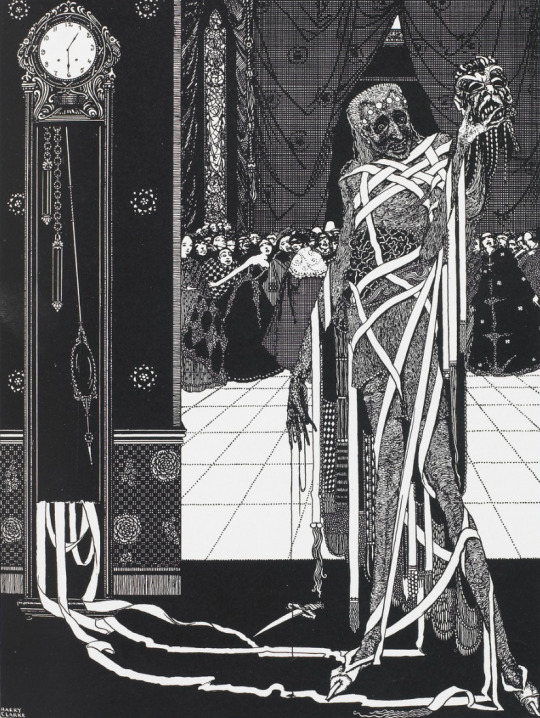
Harry Clarke - Illustration for "Masque of the Red Death" (1919)
In the same exact year of Dukas’ tone poem, we get Bram Stoker’s Dracula. At this turn of the century other major names include Gaston Luroux (The Phantom of the Opera), Robert Lewis Stevenson (Dr. Jekyll and Mr. Hyde), Henry James (The Turn of the Screw), Oscar Wilde (The Picture of Dorian Gray). At this time, there are a few more pieces that continue trying to evoke Gothic subject matter. One comes from Gustav Mahler’s Symphony no.7 (1905), sometimes dubbed “Song of the Night”. Two of the symphonies five movements are titled “Nachtmusik” (night music), the first is more in line with Gothic anxiety and spookiness than the second which is more like a serenade. But the most Gothic movement is the Scherzo which sits in the middle of the symphony and is like a Viennese ballroom full of dancing corpses and skeletons as waltz music decays with them.
A surprising example (at least, because of how relatively obscure it is) comes from Claude Debussy with parts of an opera based on Poe’s The Fall of the House of Usher that he worked on between 1908-1917. Not too much a surprise on the one hand because French translations of Poe’s work became popular and influential. On the other hand Debussy is more known for evocative sound pictures, unique musical colors, and subtlety. Perhaps he was drawn to symbolist and psychosexual interpretations of The House of Usher, the same interests that preoccupied him with his only finished opera Pelleas et Melisande. Roger Orledge reconstructed the opera and tried to stay true to Debussy’s style, so what we do have is passable and as shadowy and vague as his other orchestral masterpieces.
Maybe the hardest work to recommend (but I do recommend regardless, give it a chance) is a Modernist song cycle for chamber ensemble. Arnold Schoenberg’s Pierrot Lunaire (1910) uses freely chromatic atonality to give a demented color of psychosis experienced by Pierrot, personified version of a stock character for old Commedia dell Arte plays, a clown who over time became the “sad clown”. Maybe a precursor to the demon from Stephen King’s It, or the demented clowns and jesters that laugh at the madness of the cosmos across Thomas Ligotti’s short stories.
This was only meant to be a small overview of works that could fit my own view of the Gothic in music. There are more examples I could include, so as a hint toward today, I’ll end with a piece that was written about a century ago, yet sounds as if it could have been written today. Henry Cowell’s The Banshee (1925) is a short piano piece, so if you can, at least listen to this one. Instead of playing with the keys like you’re “supposed to”, Cowell asks the performer to drag their fingers along the wires directly. This creates disturbing reverberations and scratching sounds that tingle the back of your neck, that feel like the otherworldly cry of a Banshee.
Happy Halloween.
#classical music#Halloween classical#Halloween#Halloween music#Mozart#Haydn#Beethoven#Schubert#Liszt#Paganini#Berlioz#Saint-Saens#Mussorgsky#Wagner#Verdi#Dukas#Mahler#Debussy#Schoenberg#Cowell#Wolfgang Amadeus Mozart#Josef Haydn#Ludwig van Beethoven#Franz Schubert#Niccolo Paganini#Franz Liszt#Hector Berlioz#Camille Saint-Saens#Cesar Franck#Franck
87 notes
·
View notes
Text

Lincoln Highway, Cowell, South Australia.
30 notes
·
View notes
Text

"Paula helps pull it all together," Simon says proudly of his fiancée. "She never fails me. Sharing this passion with her is honestly everything."
(gonna pretend he said this about P)
11 notes
·
View notes
Text
Americans Abroad Midweek Preview: Zendejas faces Cowell and more
The CONCACAF Champions Cup rolls on with a pair of U.S. men’s national team hopefuls squaring off in the Round of 16. Alex Zendejas and Club America visit Cade Cowell and Chivas on Wednesday as the pair of Liga MX squads prepare for two legs. Zendejas has remained a key performer for Club America this winter, logging five goals and five assists in eight league appearances. The 27-year-old remains…
0 notes
Text

reminiscing about childhood books after that ask - all due respect to cool sleek movie toothless....but to me, he will always be a mean little gremlin
#my art#dragon#illustration#how to train your dragon#httyd#httyd books#i love you small toothless. i love you and your beautiful eyelashes. you are not overshadowed to me#also fireworm (top right) and monstrous nightmares as a whole were SO influential on my art and also my ocs#i never thought about it until very recently but my god. my god. so obviously a heavy influence on florawell especially#i drew her a lot as a kid she was my fav. cause she was mean and snooty. nowadays i do appreciate the ugliness of seaslug though#i wanna read the end of that series eventually....get some childhood closure#cressida cowell's drawing style is so charming and good...like drawing intentionally ''bad'' (10000 quotation marks) is so hard to pull off
2K notes
·
View notes
Text
Uploaded Love Tangle: Oliver Cowell Premium Route on YouTube!

#shall we date? love tangle#love tangle#shall we date?#swd#otome games#uploaded#youtube#oliver cowell#oliver#cowell#premium route#both endings
1 note
·
View note
Link
On The Rampage, Don Lichterman, Moon Bear Monday, World News, Fitness, Noor Jehan, Catching Up, Rescues, a Song for Simon Cowell and its Ocelot's Birthday!
#a#and#bear#catching#cowell#fitness#for#jehan#monday#moon#news#noor#on#rampage#rescues#simon#song#the#up#world
1 note
·
View note
Text



Three boys named Hiccup, three sea dragons with scars over their hearts
#httyd books#how to train your dragon#how to train your dragon books#hiccup horrendous haddock iii#hiccup and toothless#the dragon furious#the wodensfang#cressida cowell#digital art#fanart#httyd fanart#illustration
1K notes
·
View notes
Text
Guy Fieri trapped me in an electrified cage and told me to write his name down on a sticky note, and if I got it wrong the cage would shock me and I would die. For some reason, I thought he was Simon Cowell, but when I put the sticky note up, it didn't shock me, leading Guy Fieri to have an identity crisis.
857 notes
·
View notes
Text




EPIC: The Musical - Ruthlessness
#cressida cowell#httyd#httyd books#how to train your dragon books#how to train your dragon#hiccup horrendous haddock iii#book!hiccup#httyd furious#furious#digital art#toothless#book!toothless#How to Fight a Dragon's Fury
746 notes
·
View notes
Text


Does anyone remember this scene from 'How to Speak Dragonese'? The one that was so wierdly out of character for Hiccup but still felt totally right?
I love this scene. Fishlegs should be there too but I left him out to make room for speech bubbles so just imagine that he's dangling off to the side somewhere absolutely dying.
#how to train your dragon#httyd#how to train your dragon books#cressida cowell#hiccup#hiccup horrendous haddock iii#camicazi#camicazi of the bog berglers#toothless#book toothless#httyd fanart#httyd book fanart#how to speak dragonese#fort sinister#the book was better#as a sequel of course#digital art#art#my art
550 notes
·
View notes
Text
Americans Abroad Midweek Rewind: Cowell, Cardoso, and more
Liga MX side Chivas de Guadalajara rolled into the next round of the CONCACAF Champions Cup on Wednesday with Cade Cowell excelling in a second leg victory. Cowell started and played 70 minutes as Chivas defeated Cibao 3-0 in second leg play. The U.S. men’s national team winger registered one assist in the match, having a vital say in the victory. Cowell’s cross in the 22nd minute helped Chivas…
0 notes
Text

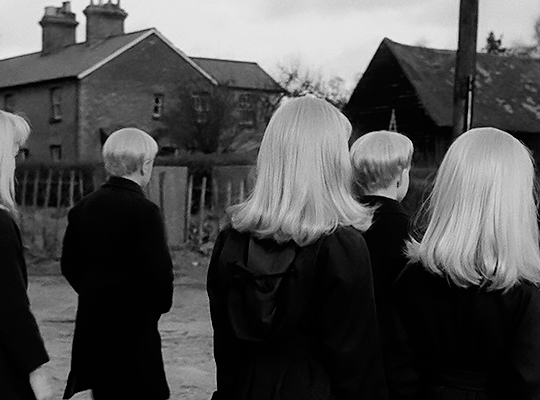
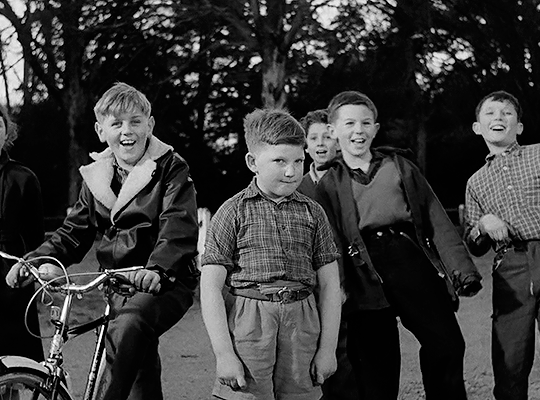
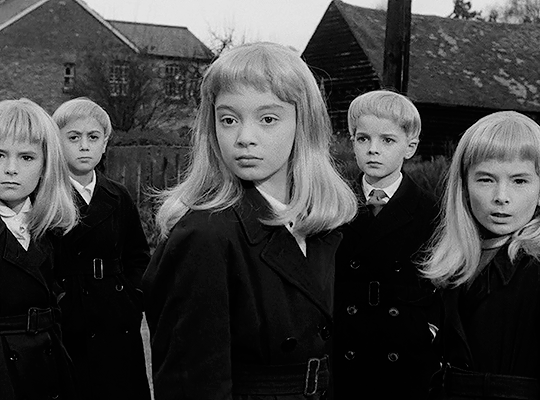
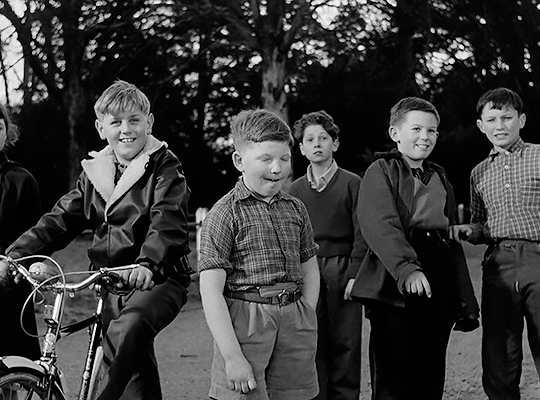
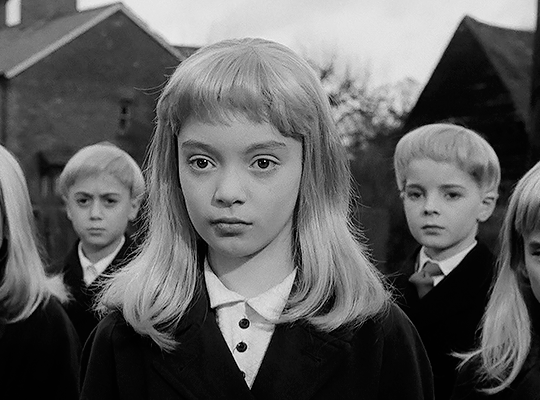
Village Of The Damned (1960)
#Horror#Filmedit#Horroredit#Village Of The Damned#Wolf Rilla#June Cowell#Martin Stephens#CHB#1960#60s#Black And White#BW#This is what it is liked getting tagged by blogs who barely post horror and don't even follow you.
1K notes
·
View notes
Text
wolverine (2000-2009), you will always be famous 💛
#in many ways william stryker and simon cowell are the same person#wolverine#hugh jackman#x men#xmen#xmenedit#james logan howlett#jade thirlwall#tagging things is embarrassin
639 notes
·
View notes
Text
We need to start questioning the conflation of "maturity" with "increased stakes."
It's not to say higher stakes is always a bad choice. The first half of the How to Train Your Dragon book series has an endearingly whimsical, child-like feel. Hiccup's issues in the first half of book one are an obnoxious, cat-sized Toothless pooping in his helmet. The movie adaptation might have made the book and its counterpart distant cousins, but it was a thoughtful move to alter concepts to the appropriately theatrical: books and movies aren't the same medium. Hiccup riding alone on Toothless, exchanging fire blasts with a mountain-sized dragon, and losing his leg came off as well-done storytelling.
Hiccup staring at a prosthetic never happened in the book. He didn't lose his leg in his encounter with the Green Death. It was, as the creative powers behind the movie said, a result of the increased stakes. They didn't do this just to be more dramatic; they did it because it seemed that, based on how their narrative was going, this made sense. And this was a soft, quiet, shocking, breath-taking scene that instilled how good the movie handled its stakes. It gave us a reflective reaction to consequences that audiences might not have expected. This movie understood timing, pauses, quietness, narrative arc, poignance, reflection, emotion, love, and heart.
We know about the conflation of live action as "more mature" than animation. But a medium doesn't change maturity levels. We all know that's bogus, and many analyses have been given on that. Disney live actions add extraneous gunk, down to Gaston having a past relationship with war (so I've heard, from the people who actually watched the movie), and Disney giving us the sad scoop on why Belle's mom isn't around. Furthermore, lots of times, when I see the conversion of animation to live action, I notice creators feel a need to "raise the stakes" -- in line with the erroneous view of "giving maturity."
But "higher stakes" often means inserting action in place of mindful interaction. I feel today's Hollywood movies, in their treatment of "action," don't let movies pause and breathe anymore - ergo, they don't let us think. Isn't it more juvenile to actively avoid thought in favor of "hey look I made the building go boom"? There may be less "stakes" in introspection and mindful dialogue, but that's what gives it its maturity. That's how we went from Iron Man 1, with its grounded treatment of war and abuse, to the mindless high spectacle MCU is today.
Snappy one-liners or moments that clap at contemporary issues don't substitute for maturity. What can make a story mature is characters grappling with issues in a natural narrative through-line. A snappy one-liner is its own form of speedy spectacle.
We know about the conflation of "gore and sex" with "mature audiences." I believe they're right that graphic sex and gore is designed for adults. But that doesn't make it mature, and that doesn't make it the only way to target a medium for adults.
"Realisticness" isn't maturity. Per above regarding animation: realistic visuals are nothing. And if you think that putting more Debbie Downer material into your adaptation makes it more adult, you have to ask yourself why the themes that spoke to people's souls got muddled in its midst. We weren't mature enough to interact with the most subtle, nuanced, and impacting voice of the story. But hey! Look! There's more corpses, I guess!
It's not the visuals, it's not the events. It's not the "things." It's not the basic insertion of the external. Get past the superficial, get past the top layer of presentation. It's the mind. It's the ability to think. It's the ability to be still. It's the ability to be interested and attentive when something is slow or quotidian, because we can understand why that is important for narrative growth or arcs or themes or commentary on the human condition. It's the ability to know when and when not to include something. It's the ability to make resonant impact. It's the ability to be deep with your emotions or your themes. It's the ability to take what you have and grow it in a way by which we can derive something deeper.
Maturity is critical thought and well-conducted, appropriate responses to content of any kind.
As DeBlois tells Empire, the move to live-action brings a different emphasis to How To Train Your Dragon; a new heft, both physically and emotionally. “It’s so dialed-up in terms of stakes — having a fully credible, photo-real dragon stomping around trying to kill him,” the director says.
And maybe that DeBlois quote is taken out of context. Maybe there's more going on than that one sentence conveys. Maybe Empire is making their own erroneous assumptions. But "so dialed-up in terms of stakes," isn't, on its own, a good appeal. The animated movie already dialed things up - and knew when to include or not include something. A live-action that imitates the visuals of the animated movie exactly, as if no independent thought has been done to its unique adaptation, to the pros and cons of the medium, to what a independently-presented story needs and doesn't need... It has to make you wonder: how many conflations of "maturity" are going on?
How long are we going to keep making our own conflations?
#long post#analysis#my analysis#httyd#How to Train Your Dragon#Dean DeBlois#why not tag him idk haha#MCU#Marvel#Marvel Cinematic Universe#tagging the shit I talk about for categorization purposes yeet#httyd books#Cressida Cowell
284 notes
·
View notes
Text

I.. am..... erm.... Well
#httyd#httyd books#hiccup#camicazi#(yeah shes here too)#fishlegs#book hiccup#book fishlegs#100 points to the one who will find them#Cressida Cowell#my art#my httyd
182 notes
·
View notes